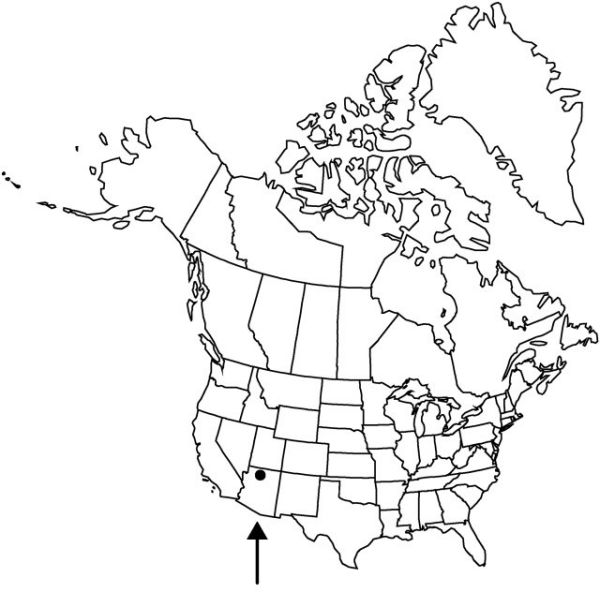Agave phillipsiana
Novon 11: 410, fig. 1. 2001.
Plants acaulescent, freely suckering; rosettes solitary to cespitose, 7.5–10 × 7.5–10 dm, open. Leaves erect, 76–78 × 10–11 cm; blade glaucous-green to dark green, lightly cross-zoned, lanceolate, rigid, adaxially concave toward apex, abaxially convex at base; margins straight or undulate, armed, teeth single, well defined, brittle, 4–7 mm, 1–2.5 cm apart, interstitial teeth (2–)3–7, mostly along distal 2/3 of margins; apex not conspicuously incurved, spine brownish gray, slender, 2.5–4 cm. Scape 2.7–5.5 m. Inflorescences narrowly paniculate, not bulbiferous, open; bracts persistent, triangular, 1–2+ cm; lateral branches 9–16, ascending to nearly perpendicular, comprising distal 1/3–1/2 of inflorescence, longer than 10 cm. Flowers 32–45 per cluster, erect, 7.4–8.6 cm; perianth greenish cream, tube campanulate, 15.5–20 × 15–23 mm, limb lobes persistent and often leathery during and after anthesis, spreading, unequal, 15–22 mm, apex often flushed with maroon; stamens long-exserted; filaments inserted subequally below rim of perianth tube, erect, yellow, 4.8–6.4 cm, apex flushed with maroon; anthers yellow, 17–25 mm; ovary 3.3–4.6 cm, neck slightly constricted, 4–8 mm. Capsules not seen. Seeds unknown. 2n = ca. 120.
Phenology: Flowering early summer.
Habitat: Sandy to gravelly places with desert scrub
Elevation: 700–1100 m
Discussion
Agave phillipsiana is known from only four sites within Grand Canyon National Park. All are found on terraces along permanent waterways. Three of the sites are near pre-Columbian agricultural features or habitation sites. Two sites occur near a Kayenta-Anasazi Pueblo cliff dwelling (a.d. 1000–1150), on a terrace presumably once farmed by the early inhabitants. Agave phillipsiana possesses traits that would be advantageous to those harvesting it for food, since it is a plant that freely offsets and has open rosettes with large, long leaves that are easily cut. The species is possibly an ancient cultivar selected by pre-Columbian people from populations related to A. palmeri, A. colorata Gentry, or other closely related taxa.
Selected References
None.
